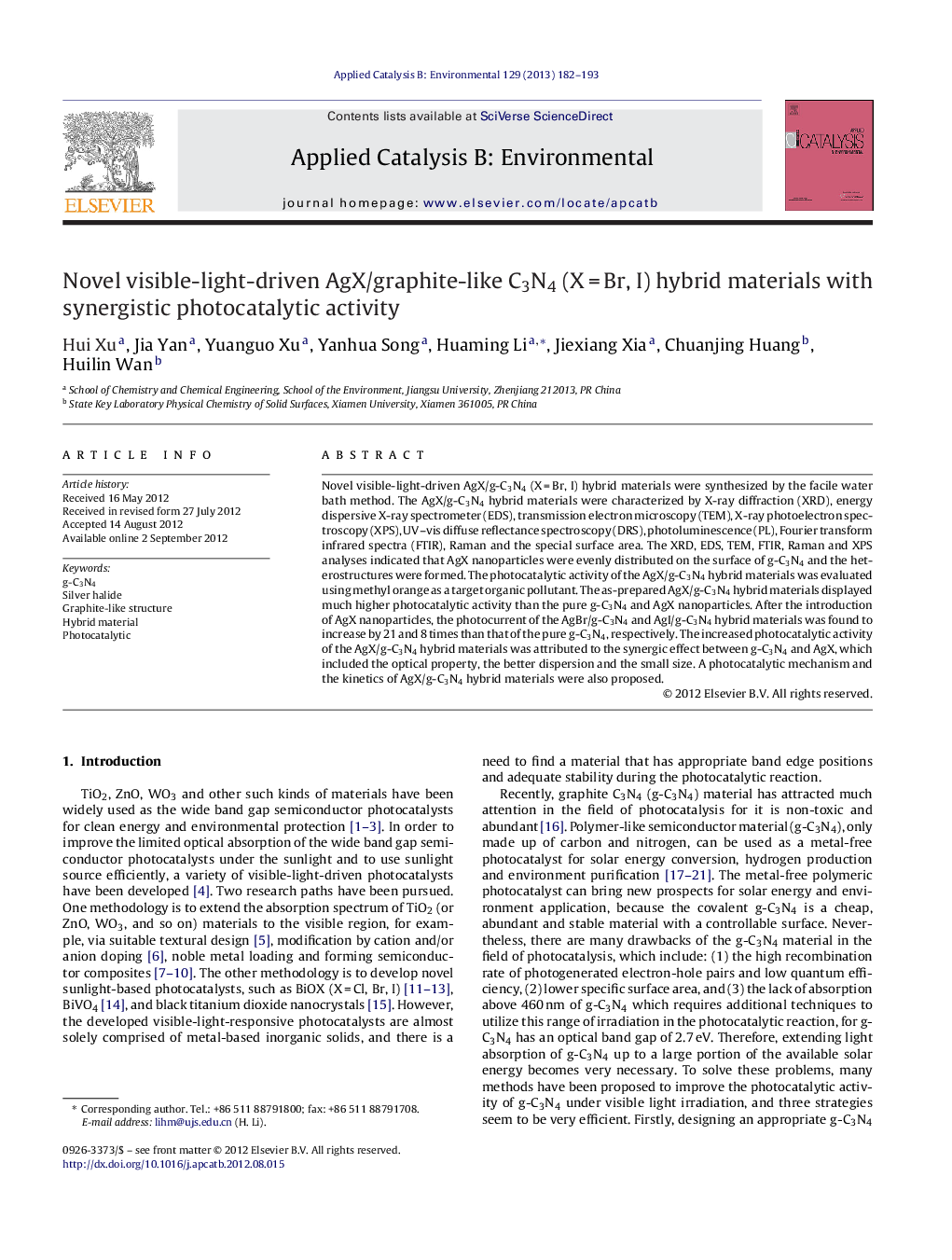| Article ID | Journal | Published Year | Pages | File Type |
|---|---|---|---|---|
| 45998 | Applied Catalysis B: Environmental | 2013 | 12 Pages |
Novel visible-light-driven AgX/g-C3N4 (X = Br, I) hybrid materials were synthesized by the facile water bath method. The AgX/g-C3N4 hybrid materials were characterized by X-ray diffraction (XRD), energy dispersive X-ray spectrometer (EDS), transmission electron microscopy (TEM), X-ray photoelectron spectroscopy (XPS), UV–vis diffuse reflectance spectroscopy (DRS), photoluminescence (PL), Fourier transform infrared spectra (FTIR), Raman and the special surface area. The XRD, EDS, TEM, FTIR, Raman and XPS analyses indicated that AgX nanoparticles were evenly distributed on the surface of g-C3N4 and the heterostructures were formed. The photocatalytic activity of the AgX/g-C3N4 hybrid materials was evaluated using methyl orange as a target organic pollutant. The as-prepared AgX/g-C3N4 hybrid materials displayed much higher photocatalytic activity than the pure g-C3N4 and AgX nanoparticles. After the introduction of AgX nanoparticles, the photocurrent of the AgBr/g-C3N4 and AgI/g-C3N4 hybrid materials was found to increase by 21 and 8 times than that of the pure g-C3N4, respectively. The increased photocatalytic activity of the AgX/g-C3N4 hybrid materials was attributed to the synergic effect between g-C3N4 and AgX, which included the optical property, the better dispersion and the small size. A photocatalytic mechanism and the kinetics of AgX/g-C3N4 hybrid materials were also proposed.
Graphical abstractFigure optionsDownload full-size imageDownload as PowerPoint slideHighlights► AgX/g-C3N4 hybrid materials displayed the much higher photocatalytic activity. ► The increasing activity of materials was attributed to the synergic effect. ► The heterostructures were superior for the transfer of electrons and holes.
